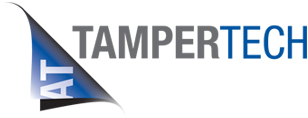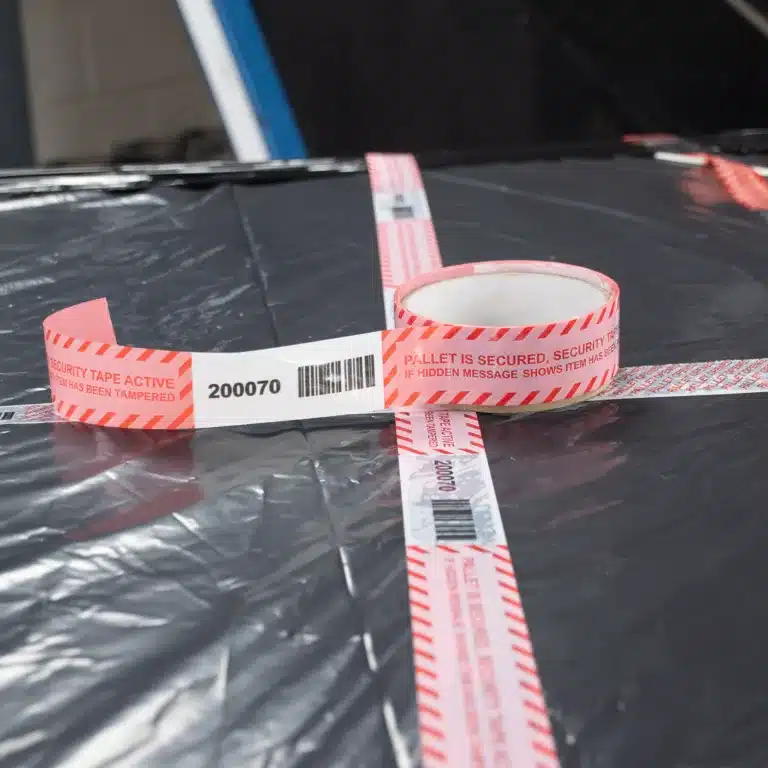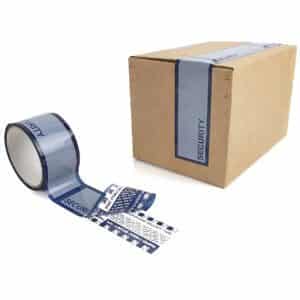
A Beginner’s Guide to Choosing Tamper Evidence Solutions: Safeguarding Your Products with Tampertech
Introduction:
In a world where product safety and integrity are paramount, tamper evidence solutions play a crucial role in protecting both consumers and brands. From pharmaceuticals to food products, cosmetics to electronics, ensuring that goods remain untampered with throughout their journey from manufacturer to consumer is essential. In this beginner’s guide, we’ll delve into the world of tamper evidence solutions, exploring their importance, types, and factors to consider when choosing the right solution for your needs.
Understanding Tamper Evidence:
Tamper evidence refers to the use of physical or chemical barriers to detect and deter tampering with products or packaging. It serves as a visible indication that unauthorized access has occurred, alerting consumers and stakeholders to potential tampering and ensuring product integrity.
Types of Tamper Evidence Solutions:
Physical Barriers:
- Tape Seals: These are adhesive tapes applied to packaging seams or closures. Once removed, they leave behind a visible “void” message, indicating tampering.
- Security Labels: These labels feature intricate designs or patterns that break apart upon removal, providing clear evidence of tampering.
Chemical Indicators with Tapes and Labels:
UV Inks: UV (Ultraviolet) inks are a type of specialty ink that fluoresces or changes color when exposed to ultraviolet light. These inks are commonly used in tamper-evident labels and tapes to provide an additional layer of security and deterrence against tampering. Here’s how UV inks are utilized in tamper-evident solutions:
- Printing Process: UV inks are applied during the printing process to create labels or tapes with specific designs, patterns, or text. These inks can be customized to match the branding requirements of the product or to incorporate security features such as hidden messages or symbols.
- Invisible Printing: One of the key features of UV inks is their ability to remain invisible under normal lighting conditions. This means that any information or design elements printed using UV inks will not be readily visible to the naked eye.
- Detection under UV Light: The true capability of UV inks is revealed when they are subjected to ultraviolet light. When exposed to UV light sources, such as handheld UV lamps or scanners, the UV inks fluoresce or emit visible light, causing them to become visible to observers. This fluorescence results in the printed elements standing out prominently against the background.
- Tamper Detection: The use of UV inks in tamper-evident labels and tapes serves as a reliable method for detecting tampering attempts. Any alteration or removal of the label or tape can be easily identified under UV light, as the printed elements will no longer align correctly or may be missing altogether. This provides clear evidence that tampering has occurred and alerts inspectors, consumers, or security personnel to investigate further.
- Authentication and Brand Protection: In addition to tamper detection, UV inks also serve as a means of product authentication and brand protection. By incorporating unique UV-printed features, such as serialized codes, logos, or seals, manufacturers can verify the authenticity of their products and deter counterfeiters from replicating them.
- Versatility and Integration: UV inks can be applied to various substrates, including paper and plastic, making them versatile for use in different types of tamper-evident labels and tapes. They can be integrated into existing printing processes, allowing for seamless production and incorporation into packaging materials.
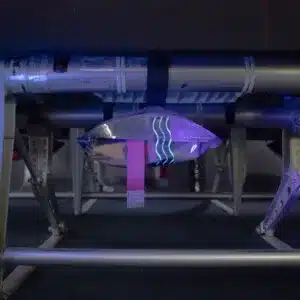
- Thermochromic Inks: Thermochromic inks are a type of specialty ink that change color or become transparent in response to changes in temperature. These inks are utilized in tamper-evident labels and tapes to provide an added layer of security and indication of tampering. Here’s how thermochromic inks are used in such applications:
- Incorporation into Label or Tape Design: Thermochromic inks are integrated into the design of tamper-evident labels or tapes during the printing process. They can be applied in specific areas of the label or tape where tampering is most likely to occur, such as seams, edges, or closure points.
- Color Change with Temperature Variation: The key characteristic of thermochromic inks is their ability to undergo a reversible color change or transparency shift in response to temperature fluctuations. These inks are formulated to change from one color to another, or from colored to transparent, within a certain temperature range.
- Tamper Detection Mechanism: When the labeled product is subjected to changes in temperature, such as heating or cooling, the thermochromic ink reacts accordingly. If someone attempts to tamper with the label by applying heat (e.g., with a hairdryer or heat gun) or cold (e.g., with ice or a freezer), the ink will respond by changing color or becoming transparent in the tampered area.
- Visible Evidence of Tampering: The color change or transparency shift in the thermochromic ink serves as visible evidence of tampering. It provides a clear indication to consumers, inspectors, or security personnel that the integrity of the labeled product may have been compromised.
- Customization and Branding: Thermochromic inks offer opportunities for customization and branding in tamper-evident labels and tapes. Manufacturers can incorporate color schemes or design elements using thermochromic inks to create distinctive and recognizable tamper-evident features for their products.
- Compatibility with Packaging Materials: Thermochromic inks are compatible with various packaging materials, including paper, cardboard, plastics, and films. They can be applied using conventional printing methods such as screen printing, offset printing, or flexography, ensuring seamless integration into the packaging process.
- Thermochromic Inks: Thermochromic inks are a type of specialty ink that change color or become transparent in response to changes in temperature. These inks are utilized in tamper-evident labels and tapes to provide an added layer of security and indication of tampering. Here’s how thermochromic inks are used in such applications:
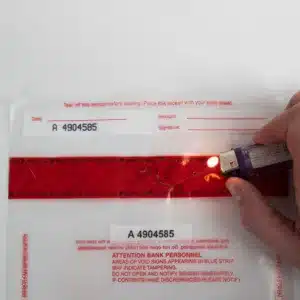
Track and Trace: Consecutive numbering and dual number tabs are two strategies used in track and trace systems to enhance the effectiveness of tamper-evident tapes and labels. These methods help in monitoring products throughout their journey in the supply chain and provide additional security against tampering. Let’s explore how each of these methods works:
- Unique Identification: Consecutive numbering involves assigning a unique serial number or code to each tamper-evident label or tape. These numbers are typically printed in a sequential order, allowing for easy identification and tracking of individual units or batches. These unique serials codes can be numbers and letters,
- Traceability: By incorporating consecutive numbering into tamper-evident solutions, manufacturers can establish a traceability system to monitor the movement of products from production facilities to end consumers. Each numbered label or tape serves as a digital fingerprint, enabling stakeholders to trace the product’s entire journey through the supply chain.
- Tamper Detection: Consecutive numbering plays a crucial role in tamper detection by providing a reference point for verifying the authenticity and integrity of products. Any alteration or tampering with the label or tape can be detected through discrepancies in the serial numbers or by comparing them with records in the track and trace system.
- Authentication: Consumers, distributors, and retailers can use the unique serial numbers to authenticate products and ensure they are genuine. Verification can be done through online databases or mobile applications that allow users to input the serial number and access relevant information about the product’s origin and history.
- Anti-Counterfeiting: Consecutive numbering serves as a deterrent to counterfeiters, as replicating or forging unique serial numbers becomes significantly challenging. The presence of serialized labels or tapes makes it easier to distinguish authentic products from counterfeit ones, thereby protecting brand reputation and consumer trust.
- Redundant Identification: Dual number tabs consist of two sets of consecutive numbers printed on the same tamper-evident label or tape. These numbers are often printed side by side or in different colors to enhance visibility and readability. TamperTech can print as many dual number tabs required to fit in with existing operating procedures, the maximum done so far has been 4!
- Enhanced Security: The use of dual number tabs increases security by providing redundancy in the identification process. In case one set of numbers becomes illegible due to tampering or damage, the second set serves as a backup, ensuring that the product can still be tracked and authenticated.
- Robustness: Dual number tabs add an extra layer of robustness to track and trace systems, making it more difficult for tamperers to bypass security measures. Even if one set of numbers is altered or removed, the intact set can still be used for verification and validation purposes.
- Flexibility: Dual number tabs offer flexibility in implementation, allowing for customization based on specific security requirements and preferences. Manufacturers can choose different numbering schemes or formats, to suit their needs while maintaining consistency and coherence across the supply chain.
- Bar codes: Barcodes play a crucial role in track and trace systems for tamper-evident tapes and labels. Here’s how they help:
- Unique Identification: Barcodes provide each tamper-evident tape or label with a unique identification code. This code can be linked to specific information about the product, such as its origin, manufacturing date, batch number, and destination. By assigning a unique identifier to each item, barcodes enable accurate tracking throughout the supply chain.
- Automated Data Capture: Barcodes are easily readable by barcode scanners, which are widely used in various industries for automated data capture. When a barcode scanner reads the barcode on a tamper-evident tape or label, it quickly decodes the information encoded in the barcode and transfers it to a computer system. This automated process significantly reduces the likelihood of human error and improves efficiency in data entry.
- Real-time Visibility: By integrating barcodes into track and trace systems, manufacturers, distributors, and retailers gain real-time visibility into the movement of products within the supply chain. As tamper-evident tapes and labels with barcodes are scanned at different checkpoints, the system updates the location and status of each item, providing stakeholders with accurate and up-to-date information.
- Traceability and Recall Management: In the event of a product recall or quality issue, barcodes facilitate rapid traceability and recall management. By scanning the barcodes on tamper-evident tapes and labels, authorities can quickly identify affected batches, track their distribution channels, and notify relevant stakeholders to take appropriate action, such as removing the products from shelves or contacting consumers.
- Authentication and Anti-counterfeiting: Barcodes can also serve as a tool for product authentication and anti-counterfeiting measures. By incorporating secure barcode technologies, such as encrypted or serialized barcodes, manufacturers can verify the authenticity of their products and detect counterfeit items. This helps protect consumers from purchasing fake or substandard goods and safeguards the reputation of the brand.
- Integration with Enterprise Systems: Barcodes seamlessly integrate with enterprise resource planning (ERP) systems and other business applications, enabling organizations to streamline inventory management, order processing, and invoicing processes. The data captured from barcodes can be synchronized with backend databases, allowing for comprehensive data analysis and decision-making.
- Compliance and Regulatory Requirements: Many industries have regulatory requirements mandating the use of track and trace systems for product safety and compliance. Barcodes provide a standardized and widely accepted method for meeting these requirements, ensuring that tamper-evident tapes and labels are traceable throughout their lifecycle.
- QR Codes: QR (Quick Response) codes on tapes and labels play a significant role in supporting tamper-evident track and trace systems. Here’s how they facilitate these processes:
- Enhanced Data Capacity: QR codes have a higher data capacity compared to traditional barcodes. This allows them to store a wealth of information, including product details, batch numbers, manufacturing dates, expiration dates, destination information, and more. As a result, QR codes provide a comprehensive means of tracking and tracing products throughout the supply chain.
- Scannability with Smartphones: QR codes can be easily scanned using smartphones equipped with QR code scanning apps. This widespread accessibility means that anyone with a smartphone can quickly read the QR code on a tamper-evident tape or label, making it convenient for consumers, inspectors, and stakeholders to access relevant product information.
- Dynamic Data Encoding: QR codes can encode dynamic data, allowing for real-time updates and changes to the information contained within the code. This dynamic capability is particularly useful for track and trace applications, as it enables the QR code to reflect the current status, location, and condition of the product as it moves through the supply chain.
- Customization and Branding: QR codes offer opportunities for customization and branding, allowing manufacturers to incorporate their logos, colors, and design elements into the QR code itself. This not only enhances the visual appeal of the tamper-evident tape or label but also reinforces brand recognition and authenticity.
- Integration with Track and Trace Systems: QR codes seamlessly integrate with track and trace systems, enabling the captured data to be linked to backend databases and enterprise systems. When a QR code is scanned, the information is transmitted to the system, updating the product’s status and location in real-time. This integration enhances visibility and transparency throughout the supply chain.
- Product Authentication and Anti-counterfeiting: QR codes can be used as a tool for product authentication and anti-counterfeiting measures. Manufacturers can incorporate secure QR code technologies, such as encrypted or serialized QR codes, to verify the authenticity of their products and deter counterfeiters from replicating them.
- Consumer Engagement: QR codes provide an avenue for engaging consumers with interactive content, such as product information, promotions, or loyalty programs. By scanning the QR code on a tamper-evident tape or label, consumers can access additional resources or participate in brand experiences, enhancing their overall engagement and satisfaction.
Stretch and Security Cuts
- Stretch labels offer several benefits for tamper-evident applications:
- Conformity to Various Packaging Shapes and Sizes: One of the primary advantages of stretch labels is their ability to conform to the shape and size of different packaging containers. Stretch labels can be applied smoothly and securely, ensuring complete coverage and tamper resistance.
- Secure Adhesion: Stretch labels adhere tightly to the surface of the packaging material, creating a strong bond that is difficult to remove without causing visible damage. This secure adhesion helps deter tampering attempts, as any unauthorized removal of the label would be immediately noticeable.
- Tamper Evidence: Stretch labels provide visible evidence of tampering by distorting or tearing upon any attempt to remove them. The stretch properties of the label material cause it to deform or break, indicating that the package has been opened or tampered with. This helps reassure consumers of the product’s integrity and safety.
- Customization and Branding: Stretch labels can be customized with brand logos, product information, and other design elements to enhance branding and promote product recognition. Manufacturers have the flexibility to choose from various colors, finishes, and printing options to create visually appealing labels that align with their brand identity.
- Cost-Effectiveness: Stretch labels offer cost-effective solutions for tamper-evident packaging compared to other methods such as shrink bands or security seals. They require minimal additional equipment for application and can be integrated seamlessly into existing packaging processes, reducing overall production costs.
- Consumer Convenience: Stretch labels are easy for consumers to remove when opening the product, thanks to their stretchable nature. Unlike traditional seals or closures that may require tools or excessive force to remove, stretch labels can be peeled off effortlessly, enhancing the overall consumer experience.
- Security Cuts: Labels with security cuts, also known as “frangible” labels, offer several benefits for tamper-evident applications:
- Visible Evidence of Tampering: Labels with security cuts feature perforations or cuts that are designed to break or tear upon any attempt to remove them. This provides clear visual evidence of tampering, as the cuts will be visibly disturbed or missing, indicating that the package has been opened or accessed.
- Tamper Resistance: The presence of security cuts makes it challenging for unauthorized individuals to tamper with the label without leaving behind obvious signs of interference. The cuts are strategically placed to ensure that any attempt to remove the label results in visible damage, deterring potential tamperers.
- Enhanced Security: Labels with security cuts enhance the security of the packaging by adding an additional layer of protection against tampering and unauthorized access. The presence of visible tamper-evident features helps to safeguard the integrity of the product and reassure consumers of its authenticity.
- Customization Options: Labels with security cuts can be customized to meet the specific needs and branding requirements of the product. Manufacturers have the flexibility to choose the size, shape, and placement of the security cuts, as well as incorporate other design elements such as logos, text, or graphics.
- Compatibility with Various Packaging Materials: Labels with security cuts are compatible with a wide range of packaging materials, including paper, cardboard, plastic, and metal. They can be applied to different types of packaging containers, such as bottles, jars, boxes, or pouches, making them versatile for various applications.
- Consumer Confidence: Labels with security cuts help to instill confidence in consumers by providing visible reassurance that the product has not been tampered with or compromised during transit or storage. This enhances consumer trust in the brand and fosters loyalty to the product.
- Stretch labels offer several benefits for tamper-evident applications:
Stripe Coating
- Dead Centre: Using tamper-evident labels with no glue in the center, often referred to as a “dead center,” offers several benefits:
- Visible Evidence of Tampering: The absence of adhesive in the center creates a distinctive feature that can be easily inspected for signs of tampering. If the label is intact, the dead center remains undisturbed. However, any attempt to tamper with the label will disrupt the dead center, alerting users to potential tampering.
- Deterrence Against Counterfeiting: Labels with a dead center act as a deterrent against counterfeiting and unauthorized tampering. Counterfeiters are less likely to replicate labels with sophisticated tamper-evident features, such as dead centers, due to the increased difficulty in reproducing them accurately.
- Integration with Packaging Design: Dead centers can be seamlessly integrated into the overall packaging design, enhancing the aesthetic appeal of the product. Manufacturers can incorporate the dead center into the label artwork, ensuring it complements the packaging design while maintaining its tamper-evident functionality.
- Finger Lift: Stripe coating, providing a finger lift on tamper-evident labels, offers several benefits:
- Ease of Opening: The finger lift created by stripe coating allows consumers to easily grip and peel off the tamper-evident label without the need for additional tools or excessive force. This enhances the user experience by making the opening process quick and effortless.
- Convenience: The presence of a finger lift makes it convenient for consumers to access the product inside the packaging. They can simply lift the edge of the label with their fingers, eliminating the need to search for other means of opening, such as scissors or knives.
- Reduced Risk of Damage: By providing a designated area for lifting, stripe coating helps reduce the risk of damaging the packaging or the product during the opening process. Consumers can lift the label cleanly without tearing or ripping the surrounding packaging material.
- Tamper Evidence: Despite being easy to lift, stripe coating maintains the integrity of the tamper-evident feature. Any attempt to remove the label will result in visible damage or residue, indicating potential tampering. This helps reassure consumers of the product’s safety and authenticity.
- Enhanced Security: The presence of stripe coating with a finger lift enhances the security of the tamper-evident label by providing an additional barrier against tampering. The label remains securely attached to the packaging until intentionally lifted by the consumer, minimizing the risk of unauthorized access.
- Versatility: Stripe coating with a finger lift can be applied to various types of packaging materials, including paper, plastic, and foil. It is suitable for use on a wide range of products, such as bottles, jars, boxes, and pouches, making it a versatile solution for tamper-evident labeling.
Factors to Consider When Choosing Tamper Evidence Solutions:
- Regulatory Compliance: Depending on the industry and geographical location, certain regulations and standards may govern the use of tamper evidence solutions. Ensure that your chosen solution complies with relevant regulations to avoid legal issues.
- Level of Protection Required: Assess the level of security needed based on the nature of your product and potential risks. High-value or sensitive items may require more sophisticated tamper evidence solutions.
- Cost-Effectiveness: Balance the cost of implementing tamper evidence solutions with the value they add in terms of product security and consumer trust. Consider long-term benefits and potential savings in the event of product recalls or liability claims.
- Ease of Integration: Choose solutions that are compatible with your existing packaging processes and materials. Seamless integration minimizes disruption to production workflows and reduces implementation costs.
- Consumer Experience: Consider how tamper evidence solutions impact the consumer experience. Solutions that are easy to understand and use enhance consumer confidence and satisfaction.
- Scalability: Select solutions that can scale with your business growth and evolving needs. Whether you’re a small startup or a large enterprise, scalability ensures continued protection against tampering threats.
Conclusion:
In conclusion, A Beginner’s Guide to Choosing Tamper Evidence Solutions: Safeguarding Your Products with Tampertech will help you in choosing the right tamper evidence solutions is essential for protecting products, ensuring consumer safety, and safeguarding brand reputation. By understanding the different types of tamper evidence solutions available and considering key factors such as regulatory compliance, cost-effectiveness, and scalability, businesses can effectively mitigate the risks associated with tampering and counterfeiting. Tampertech offers a comprehensive range of tamper evidence solutions tailored to meet the unique needs of various industries, providing peace of mind to manufacturers, retailers, and consumers alike.
